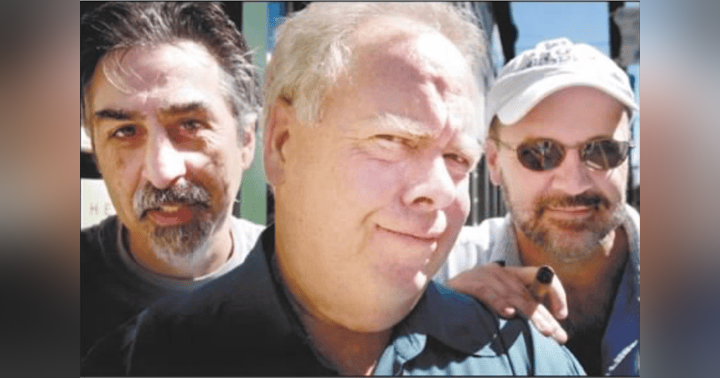
Print of the Academy of Music, 1857.
In a very early article about the Academy of Music from the late 1850s, a writer remarked that there was a general effort in Philadelphia to call it "The Broad Street Opera House." This would have followed the longstanding tradition in the city of naming theaters after the street they were situated on - like the Chestnut, Walnut, and Arch Street Theatres.
Fortunately, this name did not become popular, and the term "Academy of Music' stuck instead. Of course the original name "American Academy of Music 1857" did not stick either, even though it is carved in stone at the top of the cornice. But the inscription is not easily legible, and nobody in Philadelphia pays much attention to it.
There are so many available images of the Academy of Music, I can't possibly share them all. Though it doesn't get its photograph taken as often as City Hall, Independence Hall, or the Philadelphia Museum of Art, remember that it was not constructed with an imposing or spectacular exterior. As we mention in the episode, Philadelphia's longstanding Quaker esthetic tradition against showy ornamentation tended to discourage such things in public buildings. Usually, a restrained classicism was all architects attempted. And even the initial plans by Runge and Le Brun to place classical columns on the exterior were revised.
Remember also that Philadelphia's narrow grid plan (in the central area originally mapped out by William Penn) rather prevents the sort of broad vistas that would enable easy front-facing photographs. It's usually shown at an angle. In fact the only reason that the three aforementioned Philadelphia buildings have such attractive views available for today's ubiquitous photographers was due to a deliberate undermining of Penn's grid in the 20th Century. The Benjamin Franklin Parkway and Independence Mall were only created by tearing down a lot of other Philadelphia buildings that were 'in the way'.
That engraved central stone on the Academy's cornice was only added 40 years later, however. Here is one of the earliest photos of the Academy, taken shortly after it was completed in 1857. There is a flagpole at the top of the building (a very common ornament for theaters at the time), but no "American Academy of Music". You can also see that it still dominated Broad Street at this point in time, and that there were few other structures in the immediate vicinity.
The Academy was immediately highly esteemed all over the rest of the country. This May 1860 article from a Boston periodical, The Weekly Novelette, makes clear that not only was it regarded as an elegant structure, but that the ease of access and crowd management when the audience was much admired.
This easy accommodation of heavy traffic made the Academy attractive for other purposes as well. By the year 1872, as we can observe in this view of Broad Street during the Republican National Convention (below), the Academy had been joined to the south by the first version of Horticultural Hall, and to the north by the Union League Club. On the opposite side of the street were still fairly low and undistinguished buildings.
Horticultural Hall would burn down in 1881, and nearly take the Academy with it! Fortunately the management was well organized against just such a danger, and fire hoses were brought over the Academy's roof and water sprayed to prevent the flames from spreading. Horticultural Hall was rebuilt, but caught fire again in 1893 - again the Academy was only barely saved. Indeed it's quite fortunate that the Philadelphia Academy of Music did not meet the fate of the structure that inspired it - the New York Academy of Music burned down in 1866.
Selected Bibliography
Books:
Charter and Prospectus of the Opera House, or American Academy of Music, Chrissy and Markely, printers, Philadelphia, 1852.
Geffen, Elizabeth M., "Industrial Development and Social Crisis 1841-1854" in Philadelphia: A 300-Year History, W.W. Norton and Co., 1982, pp. 307-362.
Glazer, Irvin R., Philadelphia Theaters: A Pictorial Architectural History. Philadelphia & New York: The Athenaeum of Philadelphia and Dover Publications, 1994.
Glazer, Irvin R., Philadelphia Theatres, A to Z: A Comprehensive, Descriptive Record of 813 Theatres Constructed since 1724, Greenwood Press, 1986.
History and Description of the Opera House, or American Academy of Music, Philadelphia, G. Andre & Co., Philadelphia, 1857. (Online :https://archive.org/details/historydescripti00phil/page/n4/mode/1up?view=theater)
Lewis, Michael J., Chapter 5: "The Strange Germanness of the Academy of Music," pp. 81-97 in Philadelphia Builds, Paul Dry Books, 2021.
Marion, John Francis, Within These Walls: A History of the Academy of Music. Published by the Restoration Fund Office, The Academy of Music, 1984.
Shinn, Earl, A Century After: Picturesque Glimpses of Philadelphia & Pennsylvania, Edward Strahan, editor, pp. 79-89. (Published by Allen, Lane & Scott and J.W. Lauderbach, Philadelphia, 1875. Accessible online via Google Books.)
Weigley, Russell F. "The Border City in Civil War", in Philadelphia: A 300-Year History, W.W. Norton and Co., 1982, pp. 363-416.
Articles and Websites:
McCarthy, Jack, "Operas and Opera Houses", in The Encyclopedia of Greater Philadelphia (website), copyright 2017, Rutgers University. https://philadelphiaencyclopedia.org/archive/opera-and-opera-houses/
Miller, Tom, "The Lost Academy of Music - 14th Street & Irving Place", in Daytonian in Manhattan (website), article dated January 11, 2016.
https://daytoninmanhattan.blogspot.com/2016/01/the-lost-academy-of-music-14th-street.html
"The Opera House, Philadelphia" in The Weekly Novelette, vol. 6, no. 7, 21 April, 1860. (Accessed via American Historical Periodicals from the American Antiquarian Society database)











